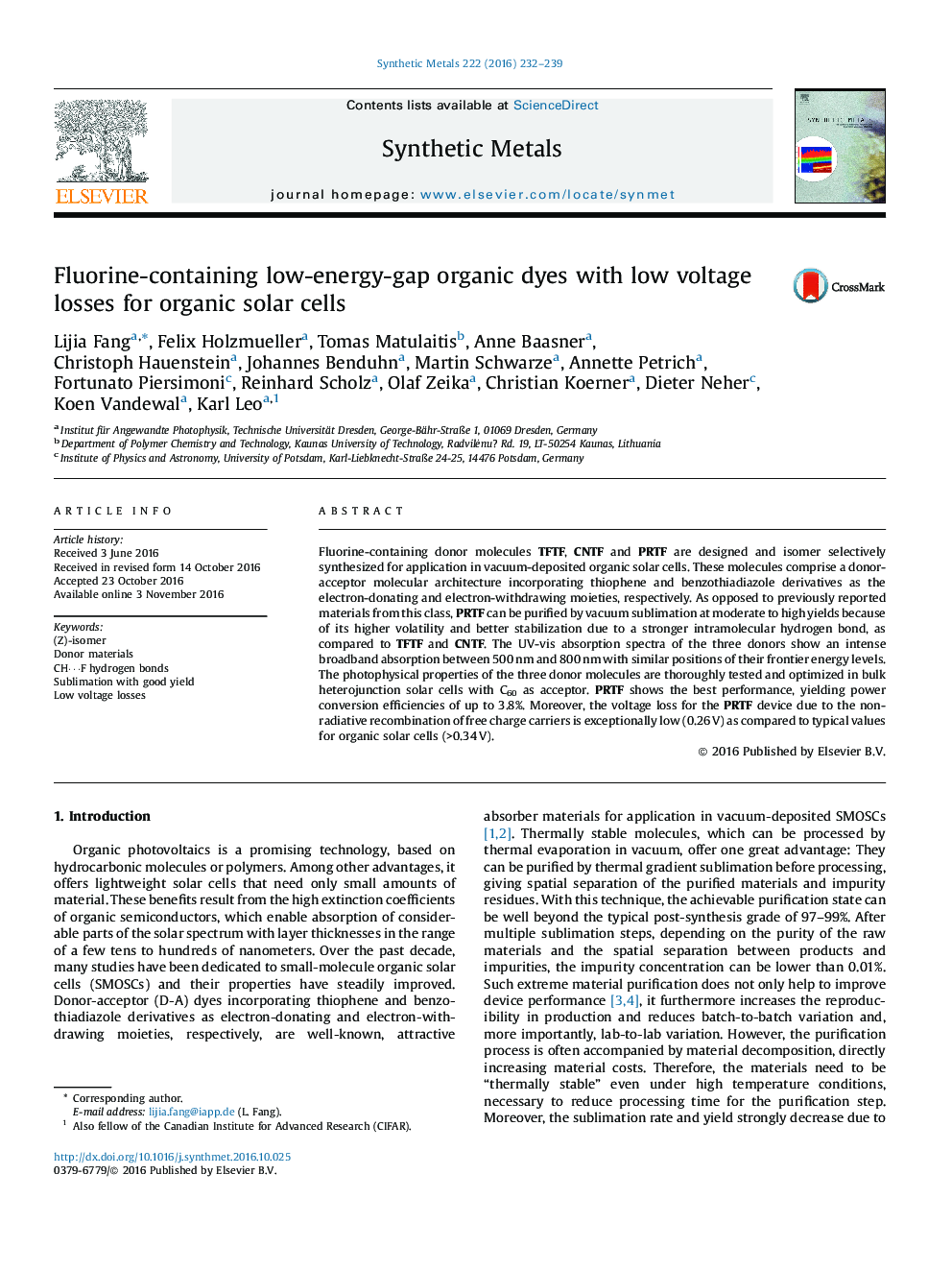| Article ID | Journal | Published Year | Pages | File Type |
|---|---|---|---|---|
| 5435512 | Synthetic Metals | 2016 | 8 Pages |
â¢Isomer selective synthesis was demonstrated.â¢New chemical purification method can be used for almost all the D-A dyes due to low solubility.â¢The new donor materials do not show significant decomposition below 300 °C under argon.â¢Optical band gaps between 1.57 and 1.62 eV were determined from the onset of the thin film absorption spectra.â¢The non-radiative voltage loss of the PRTF device is only 0.26 V, which is much lower than typically observed values for organic solar cells (>0.34 V).
Fluorine-containing donor molecules TFTF, CNTF and PRTF are designed and isomer selectively synthesized for application in vacuumâ-deposited organic solar cells. These molecules comprise a donorâ-âacceptor molecular architecture incorporating thiophene and benzothiadiazole derivatives as the electron-âdonating and electron-âwithdrawing moieties, respectively. As opposed to previously reported materials from this class, PRTF can be purified by vacuum sublimation at moderate to high yields because of its higher volatility and better stabilization due to a stronger intramolecular hydrogen bond, as compared to TFTF and CNTF. The UV-âvis absorption spectra of the three donors show an intense broadband absorption between 500Â nm and 800Â nm with similar positions of their frontier energy levels. The photophysical properties of the three donor molecules are thoroughly tested and optimized in bulk heterojunction solar cells with C60 as acceptor. PRTF shows the best performance, yielding power conversion efficiencies of up to 3.8%. Moreover, the voltage loss for the PRTF device due to the non-âradiative recombination of free charge carriers is exceptionally low (0.26Â V) as compared to typical values for organic solar cells (>0.34Â V).
Graphical abstractDownload high-res image (83KB)Download full-size image
